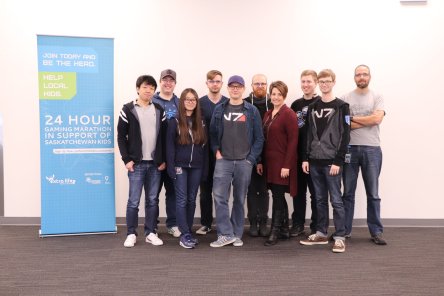No family expects to face a crisis, but when they do, having a safe place to turn can mean everything. Haven Family Connections ensures that support is never out of reach. For parents facing unimaginable challenges, whether it’s homelessness, illness, mental health struggles or the unexpected loss of a loved one, having a trusted support system can make all the difference. That’s exactly what Haven Family Connections does: provide safety for families. This isn’t even the first time we’ve highlighted their incredible work. A lifeline for families in crisis Based in Saskatoon, Haven Family Connections (formerly Crisis Nursery) has been a pillar of support for families in need for over four decades. At the heart of their mission is Haven Kids’ House, a 24/7 emergency home that provides a safe space for children while parents work through difficult circumstances. Last year alone, they supported nearly 950 children, offering not just shelter, but stability, care and hope. When a family is in crisis, the Haven team steps in immediately, ensuring children feel secure and cared for while their parents receive the support they need. From de-escalating stress to providing emotional and physical care, their work is about more than temporary relief — it’s about setting families on a path to long-term stability. The power of community support Organizations like Haven Family Connections don’t just happen — they exist because of the community that believes in their mission. Yardi Canada is proud to stand with Haven, providing financial support to ensure their services remain free and accessible to families in need. “Haven Kids’ House has offered safety and support for kids during a family crisis for over 42 years. We are a critical service that needs to stay open, and we’re proud that part of the...
Ray of Hope
The Lighthouse Saskatoon
Rick M. was starting to lose his eyesight. His optometrist missed the glaring signs of glaucoma. As a result, Rick was completely blind in one eye within two months of his appointment. The visual acuity in his other eye measures 20/60. The quick onset of the condition radically transformed his life. Rick, a university-educated and independent young man, was forced to quit his job at a major greeting card company. For several years, he was transferred between assisted care centers. He found The Lighthouse Supported Living 16 years ago. He has called it home ever since. No two clients at The Lighthouse are the same. Each person has a unique set of circumstances that have led to homelessness or poverty. To meet their singular needs, The Lighthouse offers a range of services to help clients obtain self-sufficiency whenever possible. About The Lighthouse The Lighthouse is more than an emergency shelter. It has evolved into a supported living and affordable housing provider that offers wellness services to people experiencing homelessness and poverty. Programming at The Lighthouse helps pursue achieve self-sufficiency, mental and physical health. Anna Pacik, fundraising and communications manager, was drawn to The Lighthouse because of its mission. “The mission of The Lighthouse is to take care of people holistically and help them to find a healthier, more positive path in life. I love this mission,” she explains. “The Lighthouse cares for people who are the hardest to keep safely housed.” These marginalized people may have mental health issues, intellectual and development disabilities, or “unseen disabilities” like FASD and head injuries. Clients also include trauma survivors who try to manage their pain with drugs and alcohol. Though each case is different, all are welcomed and treated with dignity. The non-profit organization aims to end...
Giving by Gaming
Yardi Saskatoon
Yardi Saskatoon participated in the Extra Life game day, a playtime marathon to support Children’s Miracle Network Hospitals. Jim Pattison Children’s Hospital was the local beneficiary of the event. Extra Life started back in 2008 with a handful of passionate gamers. Since then, the community has grown to more than 100,000 participants. To date, Extra Life has raised more than $40 million for children facing illness and major injuries. The Concept Ideally, Extra Life is a gaming marathon that lasts for 24 consecutive hours. While there is an official Game Day (often early November) gamers are able to contribute whenever their schedules allow. They’re also encouraged to take breaks and spread out the 24 hours as needed. Gamers can choose from a variety of game styles, from PS4 to card games and even hop scotch. It’s an entirely flexible fundraising platform that allows players to customize the experience based on the interests and expertise of those involved. Fundraising milestone are also customizable. Coordinators recommend a minimum of $100, but players are encouraged to select an amount that is personal. For example, Extra Life founder Jeromy Adams set his 2011 goal at $5,415. That odd number represents $5 for each day that his friend Tori spent fighting leukemia before she succumbed to the illness. Passionate participants begin by receiving achievement badges, milestones in raising awareness and rallying support. For every year of participation, gamers receive Legacy Badges that distinguish them from newbies in the field. Power Ups are the participants’ ultimate in-game reward! Each year, coordinators collaborate with partners to offer “gaming goodies.” These can range from discounts to expansion packs and merchandise. Platinum players receive Extra Life memorabilia such as t-shirts, medals, and exclusive prizes. The Event The event was held on-site on the...



